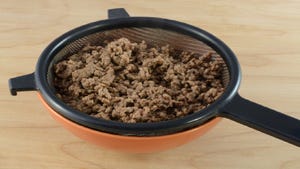April 8, 2019

Flooded pastures are a mess. After water recedes, follow these steps to help recover your pasture's viability.
First, be safe. Who knows what might have been left behind? Then, before doing any recovery efforts, contact your local Farm Service Agency and Natural Resources Conservation Service office to discuss your situation and any assistance they may be able to offer.
Do this first. You might be ineligible for assistance if you do work before receiving authorization.
After water recedes and soils firm up, remove debris and repair fences and water sources. Be sure to have water sources tested for nitrates and contaminants. Especially test any surface water such as ponds or remaining standing water from the flood.
Next, evaluate sediment levels. Pasture plants may have a tough time emerging through any more than 2 or 3 inches of sediment. Expect poor stands in any place where there are thick deposits. If possible, remove thick deposits.
Erosion may not be a big problem in many areas. However, make any repairs or apply other erosion control measures as needed. Also, check for any chemical contamination. While it’s unlikely because of dilution by all the floodwater, specific sites may be affected, especially if chemical containers were part of the debris.
Don’t even consider grazing until all the previous steps have been taken. Once pastures dry out, allow plants extra time and growth before initiating grazing.
And when animals do graze, be sure to leave taller stubble than usual to keep plants healthy and to minimize animal consumption of any flood contaminants remaining on surface soil.
Anderson is a Nebraska Extension forage specialist.
This report comes from UNL CropWatch, which is solely responsible for the information provided and is wholly owned by the source. Informa Business Media and all its subsidiaries are not responsible for any of the content contained in this information asset.
About the Author(s)
You May Also Like




